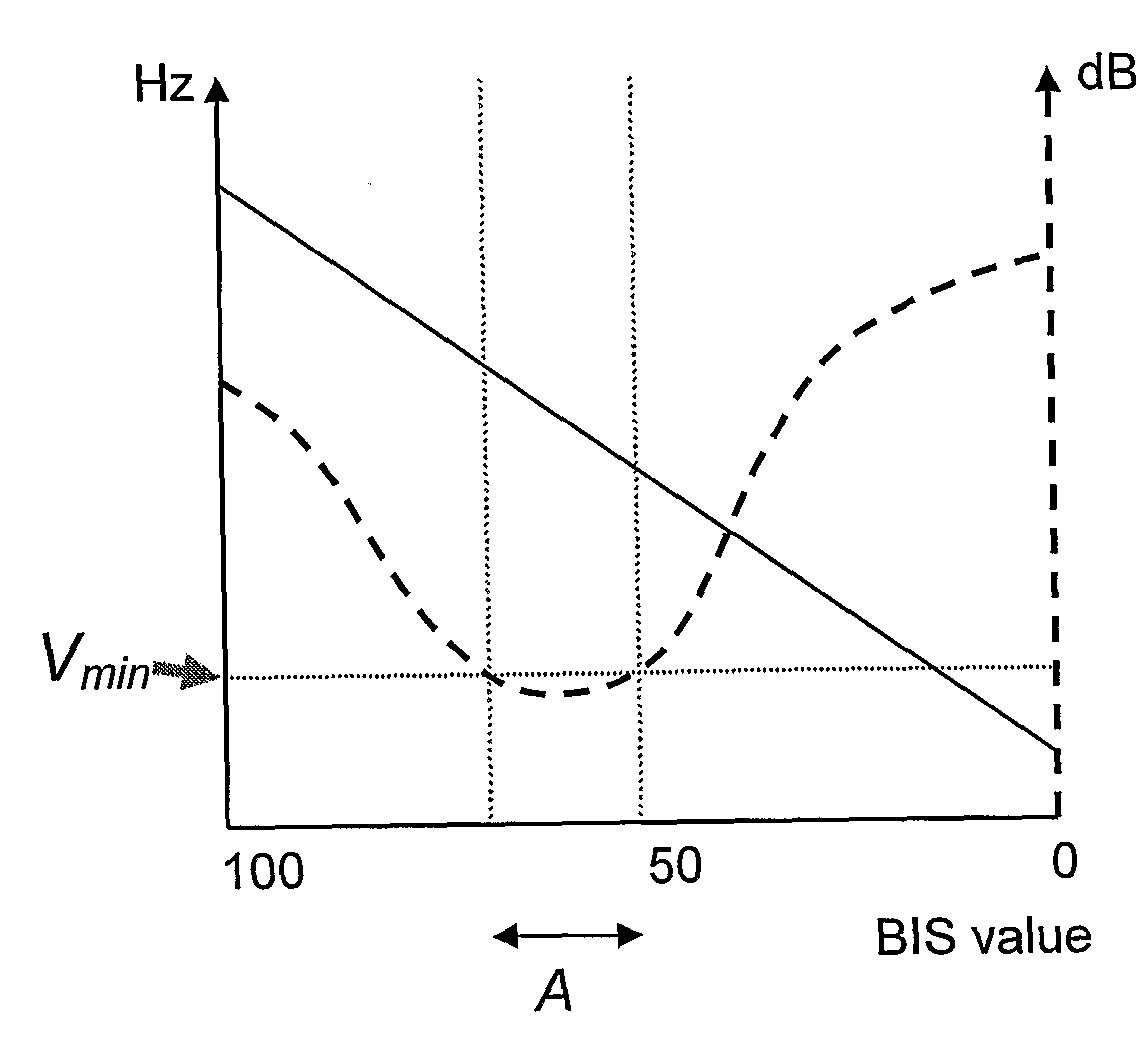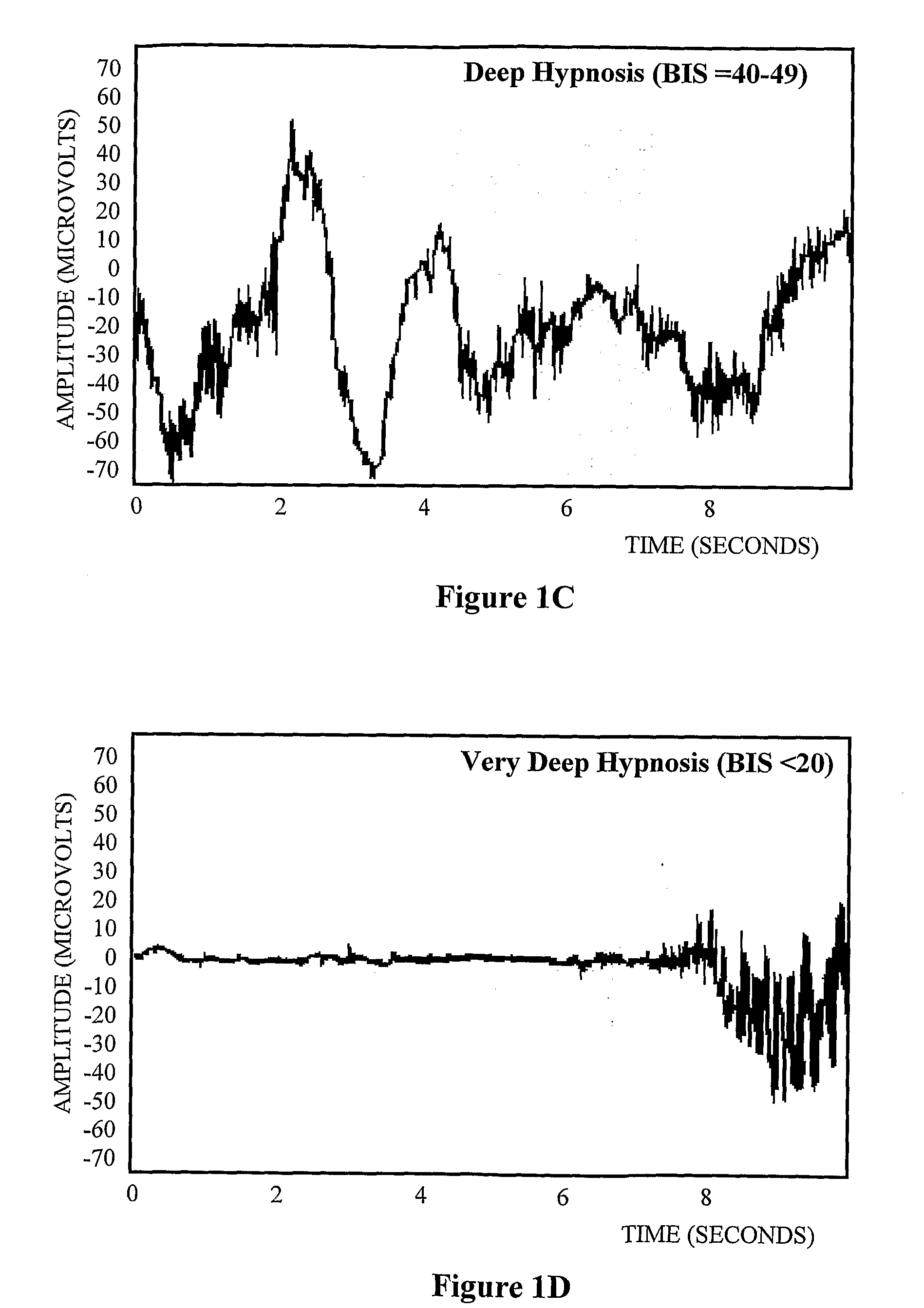Sonification of Level of Consciousness of a Patient
a patient level and level of consciousness technology, applied in the field of patient level of consciousness monitoring, can solve the problems of patient risk that the patient may regain consciousness or have memory of trauma events, and the patient's level of consciousness is difficult to monitor, so as to increase the ease of monitoring and rapid rise and fall in volum
- Summary
- Abstract
- Description
- Claims
- Application Information
AI Technical Summary
Benefits of technology
Problems solved by technology
Method used
Image
Examples
Embodiment Construction
[0057]In the invention, a measure of the level of consciousness of a patient is represented aurally by an audio signal. In the preferred embodiment described below, the measure of the level of consciousness used is the BIS Index, and therefore the aural representation of the level of consciousness will be referred to as BIS sonification. However, it will be appreciated that other measures of the level of consciousness of a patient may be used.
[0058]The apparatus used to implement the invention is typically a computer or other signal processing device (not shown) having an input adapted to receive signals derived from EEG readings. These signals are measures of the level of consciousness of a patient. The computer or other signal processing device is adapted to synthesise audio signals dependent on the respective readings. This process is often referred to as “mapping” the received signal into the output auditory BIS sonification. Typically, the audio signals are synthesised by softw...
PUM
 Login to View More
Login to View More Abstract
Description
Claims
Application Information
 Login to View More
Login to View More - R&D
- Intellectual Property
- Life Sciences
- Materials
- Tech Scout
- Unparalleled Data Quality
- Higher Quality Content
- 60% Fewer Hallucinations
Browse by: Latest US Patents, China's latest patents, Technical Efficacy Thesaurus, Application Domain, Technology Topic, Popular Technical Reports.
© 2025 PatSnap. All rights reserved.Legal|Privacy policy|Modern Slavery Act Transparency Statement|Sitemap|About US| Contact US: help@patsnap.com



